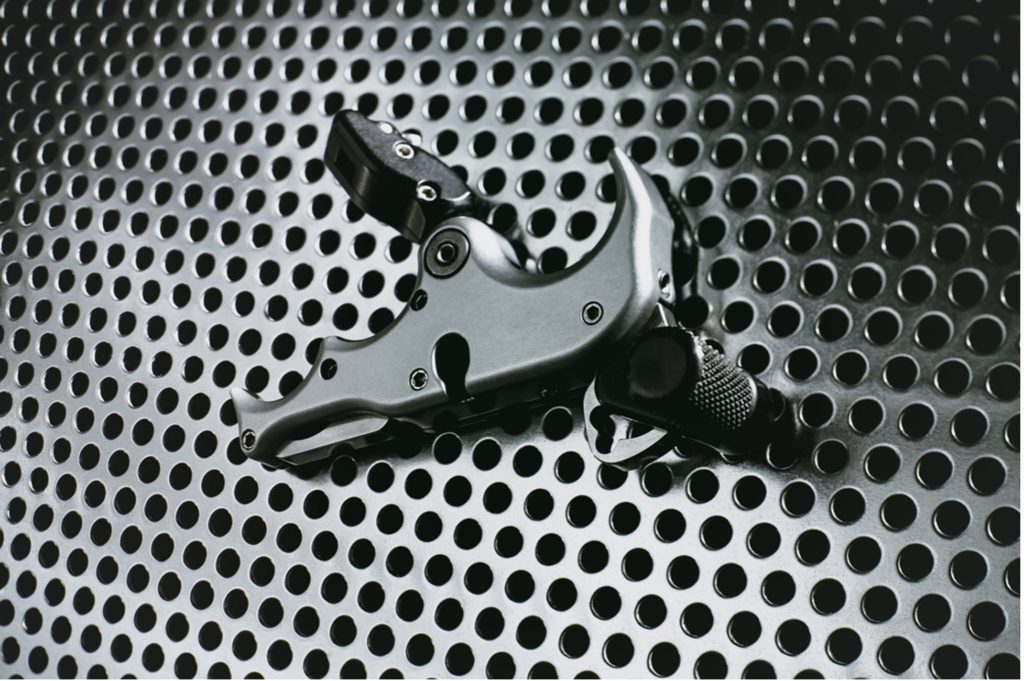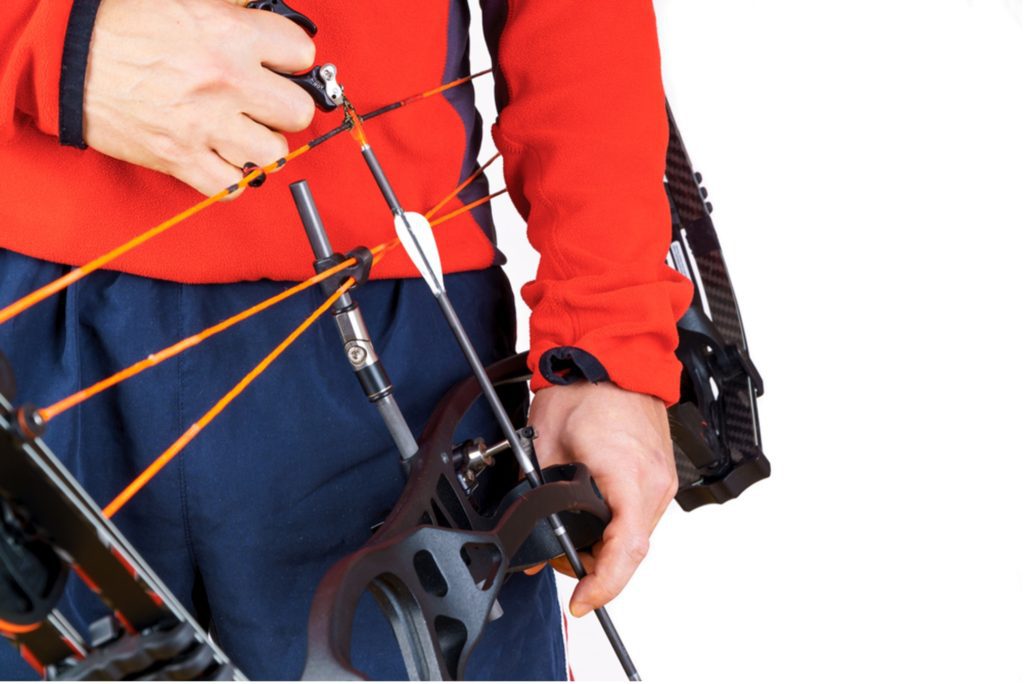If you're new to archery or hunting, you may be wondering what a bow release is and why it's important. Simply put, a bow release is a device that helps archers achieve a cleaner and more consistent shot.
Instead of using your fingers to draw the bowstring back, a release aid attaches to the string and allows you to release it with a trigger or button.
In this article, we'll explore the different types of bow releases, how they work, and the benefits of using one so that you can choose the perfect one for you.

What is a Bow Release?
A bow release, AKA release or mechanical release, is a mechanical device that lets you fire accurate shots using a mechanical system instead of relying on your bare fingers. This way, any sudden movements can’t launch the arrow or change its trajectory. You’ll only fire when you’re ready.
Archery Practice at Home {{Can You and How To}}
Some releases use a trigger or a button to fire the arrow. Release aids provide accuracy and consistency in archery shots. It’s mostly used in compound or recurve bows. A bow release can also help reduce “string torque”, which can affect your accuracy.
Additionally, they help keep your finger fatigue at bay while providing smooth, consistent, and accurate shots.
How Does a Bow Release Work?
While the basic working principle is the same for every kind of bow release available, each type also has its unique features. The basic working principle of a bow release goes something like this:
There will be some kind of hook or trigger attached to the release that can hold onto the bowstring until you’re ready to shoot. You can also use a D-loop to attach the release to your bowstring. When you pull the button/trigger, the hook gets released and the arrow has been shot!
Yes, it’s that easy. However, for the best results, you should pull the release a little further from normal so that the string reaches your nose, securing the maximum amount of strength from the bow. This will result in powerful, consistent shots.
It might feel a bit awkward at first, but with time, it’ll become more natural. If you’re new at this, try to practice in front of an experienced archer. They’ll be able to guide you in the right direction.
Types of Bow Releases
There are multiple types of bow releases available on the market. Let’s explore the different kinds of bow releases one by one:

Thumb Release
Just as the name suggests, a thumb release can be activated by using your thumb. Usually, this type of release is held on hand, with a hook attached as a release mechanism.
Thumb releases are incredibly popular among hunters and competitive shooters as they provide clean performance without any jerking or twisting motion affecting the arrow speed. These are the most widely used type of bow releases used across the globe.
Index Finger Release
This one is another hand-hold release that can be activated by your index finger. It’s also known as a finger release, a caliper release, or an index release. Here, instead of using your thumb, you trigger the arrow release with your index finger.
This type of release is especially popular among competitive archers. You can use this type of release with any kind of bow. However, mastering how to use an index finger release can be a bit challenging, especially if you’re a beginner.
T-Handle Release
Also known as the hinge release, this type of bow release consists of a T-shaped handle that is connected to a locking mechanism. T-handle releases are super easy to use, so they’re a good choice for beginners. If you’re looking for a comfortable grip and good leverage, you should pick one of these.
This type of release is especially popular among bow hunters, as it allows them to quickly acquire their target and shoot lightning-fast arrows with high accuracy.
Back Tension Release
They work the opposite of how an index release works. There is no trigger. Instead, it relies on the amount of pressure created by your back muscles to open the safety lock and fire the arrow.
This might seem a bit intimidating to many shooters, but once you get the hang of it, back tension releases are surprisingly easy to use and provide amazing accuracy. This is the reason back tension releases are widely popular in the expert archer community.
However, as there is no trigger, you’ll need to hold the safety down while you draw. Otherwise, it can hit your face, and that would be painful (trust me, I know)!
Reasons You Need A Bow Release
Improved Accuracy
The main reason people tend to rely on bow releases instead of their fingers is to improve accuracy. Shooting a bow accurately requires proper attention and complete control over the situation. Unfortunately, optimum control is really hard to maintain when you’re just using your fingers.
Also, all it takes for an arrow to miss the target is sudden slight movement when releasing. A good bow release can help you recover from target panic and provide you with more control over your shots. This allows you to shoot accurately and consistently, improving your performance over time.
Consistent Release
Not only will bow releases help you improve your accuracy, but they’ll also make sure your shots are consistent. Just like I mentioned above, a tiny change in the pressure or movement can cost you your shot. This is where bow releases can save the day.
A bow release is the best way to ensure accurate and consistent shots. It eliminates the external factors that can affect the trajectory of your arrow and makes sure that you can hit that bullseye every time. There will be no more accidental dry firing.
Increased Comfort
Pro archers tend to prioritize comfort when shooting as the more calm and relaxed your nerve is, the better your shots are going to be.
A bow release is far more comfortable than using your bare fingers. This can also help you reduce fatigue and help you focus better on your shots.
Reduced Torque
We talked a little about the “string torque”, remember? It’s when you release your arrow, the string can be pulled off-center by the torque generated from your grip. This force may seem trivial, but it has some significant consequences.
For example, it can force the string to twist/rotate and create an uneven force distribution, causing the arrow to fly off-course. It can also impact the speed and penetration force of your arrow, resulting in inconsistent shot groups, missing the target, or worse, wounding an animal in the woods.
Using a bow release aid can help to reduce torque by providing a consistent release of the bowstring, regardless of the archer's technique or form.
Amazing Versatility
There are a wide variety of bow releases available today. Whether you are a beginner or have the professional expertise, choosing the perfect bow string for you won’t be much difficult if you know exactly what you want.
If you prefer comfortable shooting, there are dedicated releases for that. Whether you want increased accuracy or more control over your shots, there are bow releases for everyone.
Which one will work best for you will depend on your personal preference mainly. So try out a few different options before you settle for one.
Safety Concern
When you pull your bowstring by your fingers, there is some risk associated that you may release the arrow early, or the string torque may cause your arrow to veer off-course, posing a potential threat of accident to nearby people.
Also, the string can hurt even yourself, if you’re not careful. Using a bow release can help you make your archery session more secure and enjoyable. Aside from protecting you from embarrassing incidents, a bow release will also help you improve the safety of everyone around.
We hope this brief overview of bow releases will help you to understand the importance of using one. Whether you are target practicing or bow hunting, it’s important to maintain accuracy and safety. Bow releases are perfect tools to ensure that.
